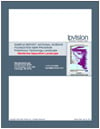The phrase "patent landscape" has become quite popular amongst the patent specialists and patent expert set. Their gravitation to the term is well-founded given the importance of IP rights to corporate success.
Unfortunately, most persons focusing upon "patent landscapes" look to laborious (or labor arbitrage driven) studies of technical disciplines.
Focus upon the core issues facing technology company executives, management and investors.
- Do we have good / the right technology?
- Are we well positioned to our competition?
- What is the quality of our patent position(s)?
- What is our risk profile / exposure?
And, perhaps most importantly, do we have a sound patent strategy and method to exploit other IP rights that we own?
Upon reflection, a better strategic approach to this process exists:
- Look at known patents and research leaders
- Analyze others use of those innovators' terms of art and key words
- Assess activity trends and investment concentrations
- Use proven evidence-based techniques to identify the core players, trends, and investment clusters within the technology landscape
Some of these answers are relatively easy to obtain, and cost-effective:
- Free or low-cost resources exist, including our own See-The-Forest patent analysis software
- When required, more extensive patent insights can be gained quickly and cost effectively from patent analytics reports or focused projects. Although budget and time investments are required, the returns are significant.

At the end of the day it is important to respect your own expertise and understanding of your firm's market dynamics.
Focus on obtaining patent information in context.
You know that successful leadership is demonstrated by explicitly managing your decision process and all available insights and information -- not by blindly delegating decisions to others inside or outside of your organization.
In the strategy context, we previously discussed the role of patent analytics in corporate strategy and how leading executives and investors take command of questions related to patent risk, market entry, and acquisition decisions grounded in IP rights.
Ask that your experts take evidence-based factors and a broader perspective into their patent analysis.
You might be pleasantly surprised by the business and strategic insights that your patent counsel can provide you after traditional patent risk management blinders and lenses are removed.


